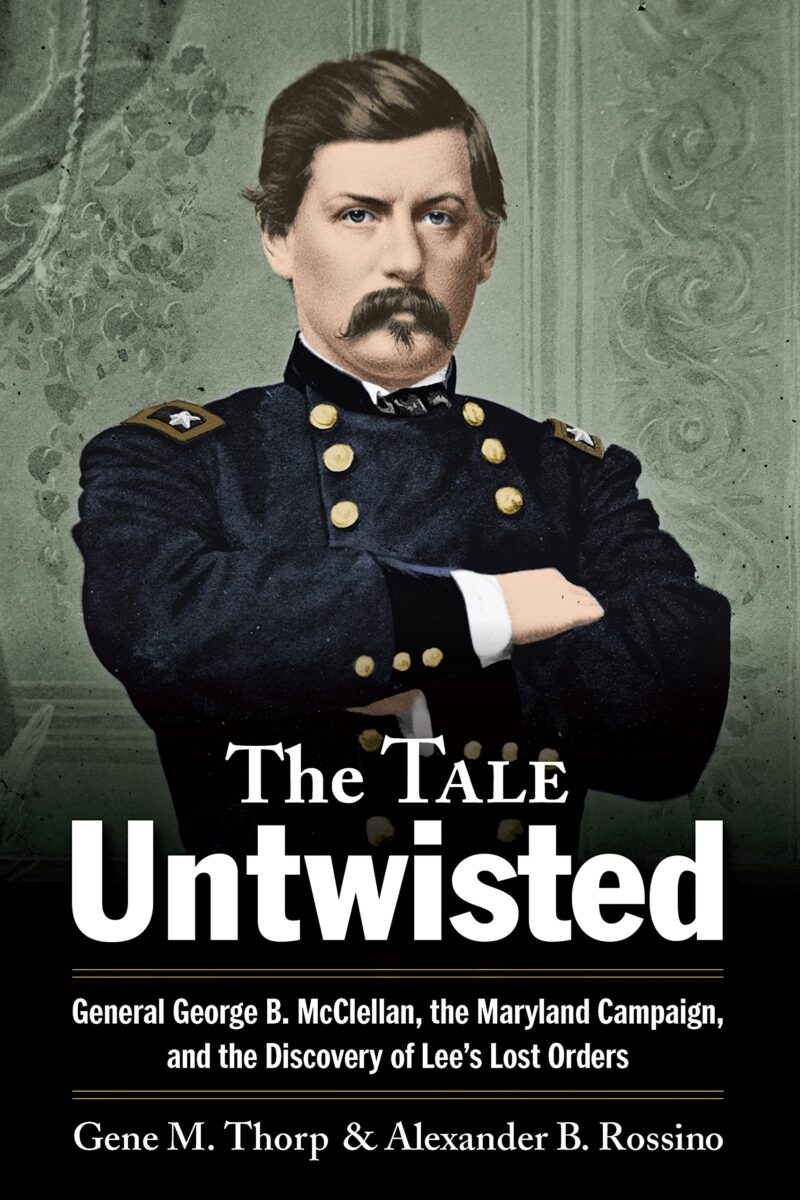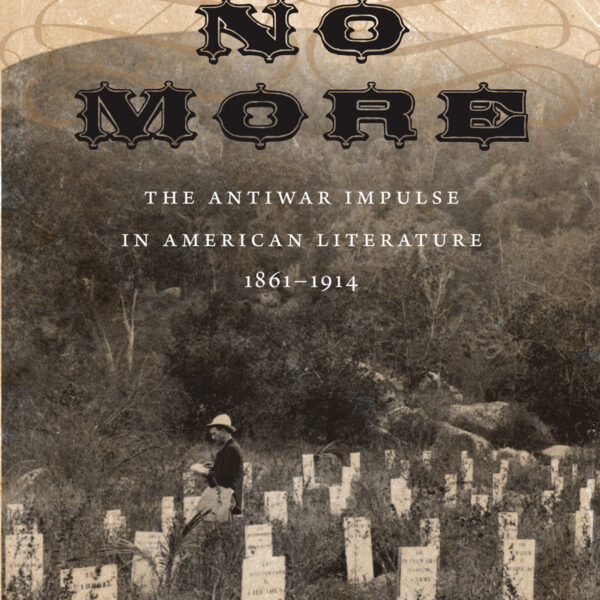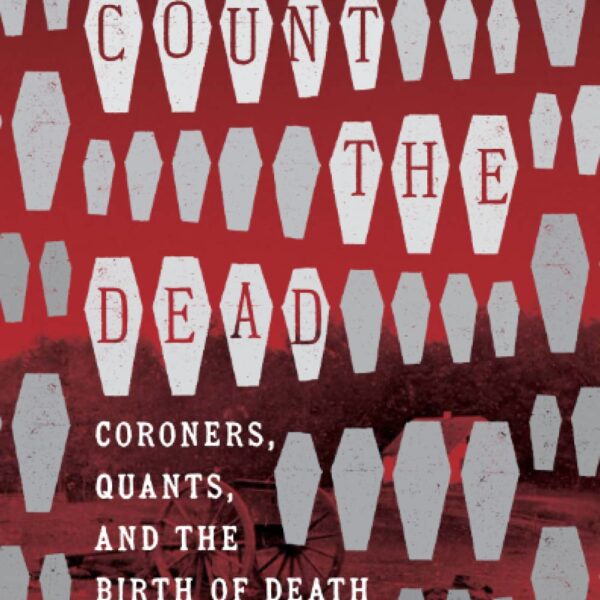On Saturday, September 13, 1862, a Hoosier private stumbled upon a stray copy of Robert E. Lee’s Special Orders No. 191 near Frederick, Maryland. The discovery of the “Lost Orders” ranks among the most fabled episodes of the Civil War—cited as a textbook example of “contingency” and known to even the most casual students of the conflict’s history. Yet as authors Gene M. Thorp and Alexander B. Rossino reveal in this forcefully argued and amply documented book, virtually everything we know about the Lost Orders—from when Maj. Gen. George McClellan first clutched them to their effect on subsequent army movements—demands revision. Even staple details of the established narrative are called into question. The authors point out, for instance, that the Lost Orders (at least according to the most contemporaneous account) bound two cigars, not three.
Generations of scholars held that even after the most improbable intelligence windfall of the war, McClellan continued move slothfully, squandering an opportunity to destroy Lee’s army and relieve Col. Dixon Miles’s besieged federal garrison at Harpers’ Ferry. Thorp and Rossino trace the origins of this narrative to the war itself, pointing to Henry Halleck’s self-exculpatory testimony during the Joint Committee on the Conduct of the War’s inquiry into the surrender at Harpers’ Ferry, and to William Swinton’s politically-motivated account of McClellan’s generalship, published during Little Mac’s 1864 bid for the presidency. The authors detect echoes of the earliest McClellan scapegoating in much subsequent scholarship, citing in particular the work of the bestselling historian Stephen W. Sears.
Notwithstanding the resilience of early interpretations, the rough outlines of a new narrative came into view in the late 1990s, beginning with the work of the late Joseph L. Harsh. In 2012, Maurice D’Aoust’s revelation that McClellan’s oft-cited September 13, 1862, message to President Lincoln (“I have the whole rebel force in front of me….Will send you trophies”) was time-stamped “midnight,” not noon, only underscored just how urgently the 1862 Maryland Campaign merited a fresh look. In the ensuing years, a growing body of scholars—among them Tom Clemens, Dennis E. Frye, D. Scott Hartwig, and Steven R. Stotelmyer—has dramatically revised our understanding of the events of September 1862.
Thorp and Rossino build on but meaningfully extend this work. In a narrative that foregrounds their astute historical detective work and careful sequencing of evidence, the authors argue convincingly that McClellan moved with purpose and alacrity to check Lee’s invasion. Thorp and Rossino point out that most histories of the 1862 Maryland Campaign “only begin on the 5th [of September],” a periodization that noiselessly excises the “grueling marches” undertaken by McClellan’s soldiers as they moved out of Virginia (43). Indeed, Little Mac “march[ed] his men as far as forty miles during the first few days” of the campaign (53). Once his columns snaked north from Washington, McClellan took care to cover Baltimore—even as he worked to develop the position and strategy of his adversary. Through it all, he was hounded by Henry Halleck, who remained convinced that the Army of Northern Virginia was ready to attack the nation’s capital south of the Potomac.
The authors trace the movements of McClellan and his army around Frederick on September 13. The “sequence of events” they tease from the sources makes clear that the Lost Orders “could not realistically have been placed in a courier’s hands before 1:00 p.m.”; as such, they likely did not reach McClellan until the early afternoon (83). Combined with the fact that telegraph wires between Frederick and Washington, D.C., “remained down” much of the day, Thorp and Rossino conclude that “the reading public has been fed a lie about McClellan’s alleged ‘noon’ message to Lincoln for more than 100 years” (86). What is more, they argue, “the general did not waste a moment” of time once the “errant dispatch fell into his hands” (96). Little Mac was already on the move, feeling his way west of Frederick with cavalry and infantry.
It is here that Thorp and Rossino diverge from Joseph L. Harsh and other Maryland Campaign revisionists. Harsh argued that the discovery of Special Orders No. 191 “did not materially affect the movements of the federal army on the 13th,” for McClellan was already “on the move.” By contrast, Thorp and Rossino argue that the Lost Orders supplied McClellan with “key pieces of information,” bringing Lee’s strategy into sharper focus (96-97). Their discovery was crucial after all. As a result of their find, McClellan “doubled down on his offensive strategy,” confident he now had an opportunity to deliver a severe blow to a dangerously divided Army of Northern Virginia (105).
Little Mac choreographed a “corps-level en echelon attack” for September 14. He planned for his army’s main assault to “[pin] Longstreet and [D.H.] Hill” in place at Boonsboro, thereby allowing Maj. Gen. William Buel Franklin’s Sixth Corps to surge through Crampton’s Gap (101). Blame for the untimely capitulation of the Harpers’ Ferry garrison, the authors thus conclude, must be placed squarely on the shoulders of Col. Dixon Miles. McClellan had a workable plan and stood ready to follow up on what turned out to be a brilliant victory atop South Mountain.
This slender volume packs considerable punch. Readers will delight in the seventeen beautiful maps that not only illustrate the text, but also amplify the book’s arguments. They will likewise find much to ponder in three short appendices, which consider telegraphic communications during the campaign, assess McClellan’s troop strengths, and supply the text of the Lost Orders. All future scholarship on the Maryland Campaign must account for these authors’ critical findings. This is an essential addition to any Antietam bibliography.
Brian Matthew Jordan is Associate Professor of History and Chair of the History Department at Sam Houston State University. His next title, co-edited with Jonathan W. White, is Final Resting Places: Reflections on the Meaning of Civil War Graves, to be published by the University of Georgia Press in September 2023.





